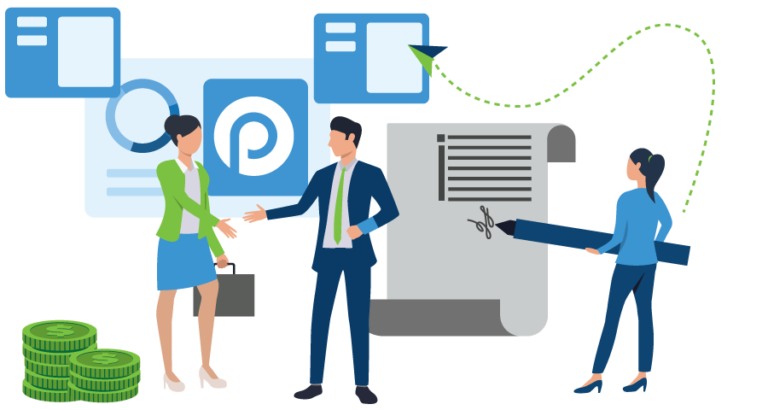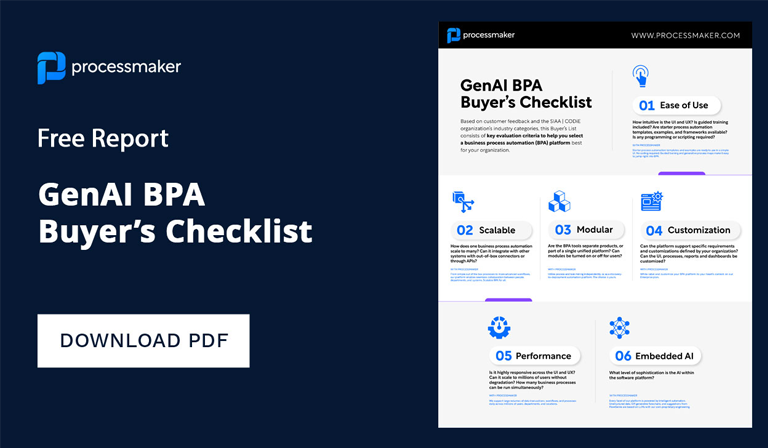As the new year approaches, many of us are optimistically looking ahead to 2021. This past year has brought unprecedented challenges within a global pandemic. Organizations were forced to reevaluate how they operate and provide goods and services.
One way that organizations have overcome these challenges is through digital transformation. According to a recent McKinsey survey of executives, the pandemic has accelerated digital transformation by “three to four years”; while the share of digitally enabled products in executives’ portfolio has “accelerated by a shocking seven years”.
The implementation of these digital technologies are not just a stop gap measure. According to the survey, “respondents expect most of these changes to be long lasting and are already making the kinds of investments that all but ensure they will stick”.
As we move into the new year, digital transformation remains a priority. Choosing the right digital transformation framework is key. In this article, we will look at 20 digital transformation examples in several industries that we anticipate playing critical roles in 2021 and beyond.
Digital Transformation Examples in Banking
Despite a slow start with digital transformation, the banking industry has made significant progress in the past few years. Here are a few examples of digital transformation in banking.
Banking-As-A-Service
To compete with digital-only banking apps, traditional banks are expanding their service offerings by integrating digital banking services into third-party platforms. Banking-as-a-service not only improves the customer experience, but it also allows banks to unlock new and important revenue streams by monetizing their platforms.
RPA for Deferments
The economic crisis has led to a flood of deferment requests. These will continue well into the new year. Banks have traditionally reviewed and approved deferments through manual processes. With RPA, banks can capture customer requests, and automatically route them to the correct party for review and approval. The system then automatically makes changes to the customer’s loan account.
Smart Contracts
Smart contracts – contracts that are automatically executed when certain conditions are met – may play a key role in breaking the banking industry’s reliance on paper-based processes. Moreover, smart contracts add security and trust in the financial markets. For instance, financial products like derivatives can be automated without the need for intermediaries. Expect to see a large spike in the use of smart contracts in banking processes.
Mortgage Cross-Selling
Most of the mortgage lending industry is controlled by a handful of banks. As smaller institutions look to compete, cross-selling mortgages to existing customers offer new revenue streams. With intelligent automation systems, banks can leverage customer data to identify cross-selling opportunities.
Digital Transformation Examples in Government
Smart Cities
Governments are beginning to explore digital transformation as it applies to communities. Smart cities use electronic methods and sensors to collect data. Governments use the data to improve operations and serve citizens better. For example, Singapore’s Smart Nation vision digitally collects information using sensors linked to aggregation boxes. Agencies analyze data on traffic volume and pedestrian activity to improve services.
Streamlining Government Records
Local and state governments are increasingly moving away from inefficient records systems. Document Management Systems (DMS) help governments to automatically organize, archive, and retrieve records. These systems also reduce operating costs and increase transparency.
Infrastructure Optimization
Government agencies are looking to migrate to the cloud to streamline operations and increase capacity. Cloud-based infrastructure also offers increased security and accessibility – a necessity where more and more government employees are working remotely.
Digital Transformation Examples in Healthcare
RPA in Healthcare Administration
With the COVID-19 pandemic causing significant drops in revenue and unsafe working conditions, healthcare providers have been forced to get creative. Robotic process automation (RPA) has played an important role in reducing contact and freeing up healthcare workers’ time so they can focus on improving patient care. For example, in Singapore, one community care facility replaced manual data entry with RPA to automate the admission, discharge, and transfer of patients into/out of the facility.
Big Data
Big data provides many important benefits in healthcare, from lowering the rate of medication errors to improving preventative care to addressing staffing challenges. As healthcare professionals continue to look towards cost-effective and safe treatment options, data collection and analysis will play an integral role.
5G Technology
5G offers massive connection power and lightning-fast speeds, promising to digitally transform the healthcare industry. One important function will be expanding telemedicine capabilities. Telemedicine requires a network that can support high-quality video in real-time. 5G networks will enable telemedicine services to be offered over mobile networks allowing doctors to serve patients in remote areas.
Digital Transformation Examples in Customer Service
Centralized Customer Service Portals
Centralized customer service portals play important roles in providing
seamless customer journeys. They provide cost-effective and user-friendly self-service options. More than that, they provide scalability. As organizations grow customer touchpoints become increasingly disconnected. Portals allow organizations to centralize information and resources so customers can always find what they need.
Omnichannel Retailing: The New Normal
Omnichannel retailing rose the forefront during the pandemic out of necessity. Ordering a product from a mobile device or PC and picking it up hours later at a local brick-and-mortar location is both safe and convenient.
Retailers will need to improve data collection and integration to understand the customer experience. Automation technologies will help retailers to scale omnichannel offerings to meet increased consumer demand.
Voice UI
Many of us are already using voice interface products in our daily lives. Voice assistants like Alexa and Google help us to do everything from turning off the lights to ordering groceries. Increased user adoption of voice functionality will result in more and more brands incorporating voice features. For example, Ally Bank offers Alexa Skills for tasks like checking account balances and transferring money.
Chatbots
An estimated 74% of customers now expect 24-hour support. Chatbots will become increasingly important as organizations look to provide superior customer experiences. Chatbots also play vital roles in helping organizations to streamline their internal processes. For example, chatbots can aid customer service teams, manage calendars, and make it easier to manage assets like social media. Organizations will continue use chatbots in new ways to improve process efficiency.
Digital Transformation Examples in Marketing and Operations
The Rise of Content Hubs
As organizations look to engage with customers on more platforms, they require more efficient ways of distributing content. Headless CMSs make it possible to distribute content to multiple channels through APIs. This will eliminate time-consuming manual processes like copying and pasting content. Users can also edit content through a single source that will take effect everywhere content is located.
Employee Self-Service Portals
With more employees working remotely centralized hubs have become increasingly important. Organizations can use business process management (BPM) software to create hubs for employees and management. Employees can view tasks, tax information, and request time off. Leaders can manage tasks and make informed decisions with advanced reporting tools.
Employee Onboarding
Traditional employee onboarding processes are time-consuming, expensive, and give new hires a bad first impression. According to experts, it can cost upwards of $4,000 to onboard an employee. Remote work has made onboarding more challenging. Organizations can overcome these challenges by automating the onboarding process. For example, by automatically assigning assets to each new hire.
Inventory Control
Organizations are increasingly relying on automated inventory control systems. Some of the manual processes that are being replaced include supply chain management, tracking inventory, shipping, and fulfillment. These solutions will play a key role in coping with fluctuating consumer demand and providing excellent customer experiences.
Purchase Orders (PO)
One survey found that 43% of organizations report inadequacies in their PO practices while 64% indicated ‘urgent’ plans to address inefficiencies. With procurement process automation, organization can automate their purchase order cycles to boost efficiency and save money.
Customer Data Platforms (CDP)
In a world where there are more customer touchpoints and interactions, customer data platforms provide stakeholders with a unified view. CDPs create comprehensive customer models and allow organizations to optimize the time and targeting of offers, increasing conversion rates and providing better customer experiences.
Digital Transformation with ProcessMaker
ProcessMaker provides an industry leading low-code business process management (BPM) platform that has helped countless organizations to achieve digital transformation. Contact ProcessMaker today to discuss how we can help you to transform your organization in 2021.





